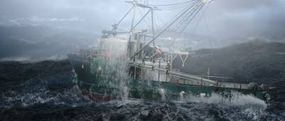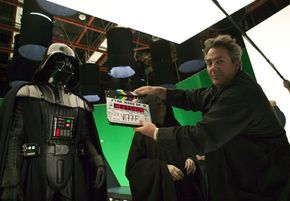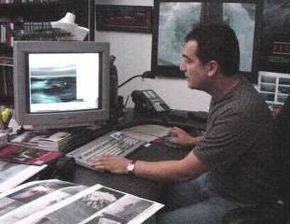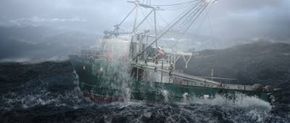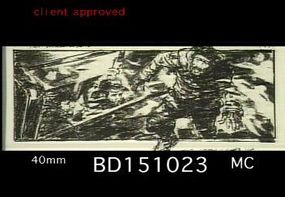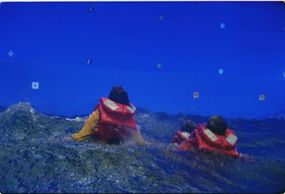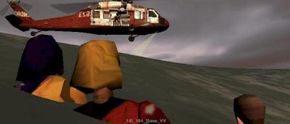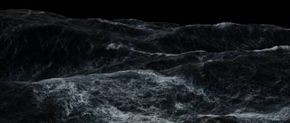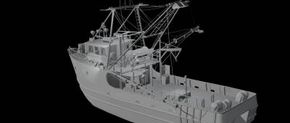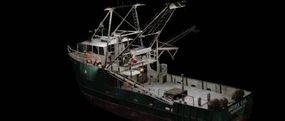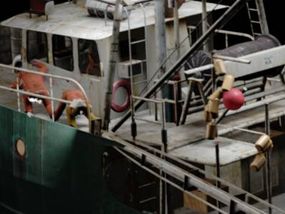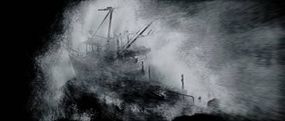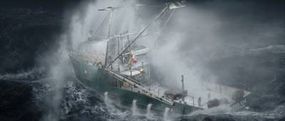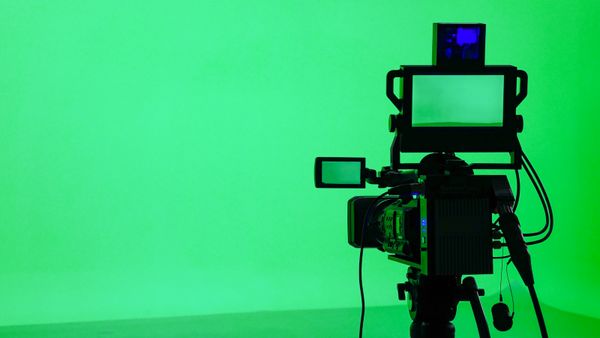To make the top water (crests on the waves, the mist and foam and all the millions of water droplets in each and every splash), ILM relied heavily on particle systems. In the world around you, everything is made up of particles in some way. Essentially, a particle is a component of a larger object. Your body, for example, is made of trillions of cells working together, and each cell is a particle. Each cell, in turn, is made up of trillions of atoms, and each of atom is a particle as well. In things like water, dust, snow and rain, the entire visual effect that you see comes from the interaction of trillions of particles. They all react with each other, other objects, gravity and the air and wind to create the patterns we see.
Realistic models must manipulate huge numbers of particles if they want to look authentic. Calculating and displaying the path that each particle should follow is the key to creating a convincing CG version of a particle system. The number of computer operations needed to track each particle is gigantic, and can lead to scenes that require days of computation time per shot, using rooms full of high-speed computers!
In computer-generated graphics, most 3D objects are only visually representational of a real object. In other words, they are not constructed down to the atomic level to exactly match the original object. To make such detailed objects is well beyond the processing capabilities and time constraints of current systems. Typically, the object is simply a shell or framework with nothing inside. Most of the time, it doesn’t matter, as long as the object looks real. But if the object has to change drastically during the shot -- for example, an ocean wave cresting and spraying over another object -- then there has to be a way to represent that change realistically.
In "The Perfect Storm," ILM accomplished this feat by using multiple particle systems. Built right into the ocean simulation is a particle system that creates millions of particles each time a wave collides with an object, whether it is a boat, a person or another wave. The particle system is assigned properties, or behaviors, that tell each particle how it should act after it is emitted from the system.
Another integral part of the simulation that affects particle behavior is the collision model. Simply put, the collision model tells each particle, as well as every other object in the scene, what to do when it comes into contact with the surface of another object, or with another particle.
Let's take a look at a wave breaking over the Andrea Gail and how the Maya models simulate it:
- The wave swells and forms. (part of the ocean simulation)
- It collides with the Andrea Gail. (a rigid body object placed in the ocean simulation)
- The impact causes the wave to break over the boat. (the particle system emits millions of particles)
- As the water from the wave spreads out, it continually separates into smaller and smaller droplets. (Each particle has been assigned the particular properties of water, which include the dynamics of surface tension versus outside forces.)
- Some of the droplets eventually become mist, and blow away on the wind. (once again, following the physical laws assigned to the particles and using aerodynamic simulation to calculate the wind forces)
- Most of the water falls onto the deck of the Andrea Gail and trickles back into the ocean, creating foam. (The particles follow the rules of the collision model upon reaching the surface of the Andrea Gail object.)
The computers are performing all of those calculations individually for each particle it is tracking. By precisely controlling the rules applied to each particle, the whole thing can look totally realistic when viewed as a whole.
However, the simulation doesn’t always "look right," or give the director exactly what he wants. For example, the amount of spray coming off the bow of the Andrea Gail may not be as heavy as Petersen wishes. In such cases, ILM would adjust the hundreds of parameters of the simulators to spray out additional particles in very precise sequences. Also special invisible objects, called emitters, are often used to create environmental effects, such as fog and mist.
Shaders are sophisticated tools that analyze the light, density and surface color of an object, and determine exactly how it will appear. Used in conjunction with the particle systems, the shaders created water droplets that were not simply white dots, but instead were convincing, translucent objects.
The level of complexity that the particle systems added to each shot is amazing. In some of the shots with large waves, the number of particles per frame can be measured in the billions! Calculating and rendering such detailed graphics takes an incredible amount of time, and the disk space required to store the images exceeded that used by "Star Wars: Episode I."
